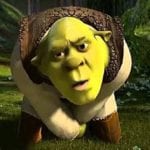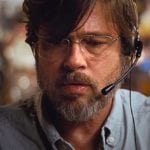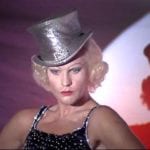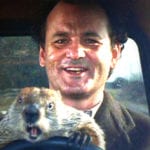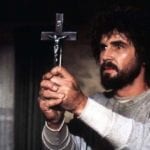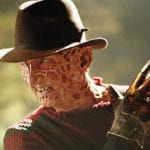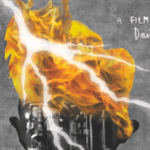 Travel
Travel  Travel
Travel  Creepy
Creepy 10 Haunted Places in Alabama
 History
History Top 10 Tragic Facts about England’s 9 Days Queen
 Food
Food 10 Weird Foods Inspired by Your Favorite Movies
 Religion
Religion 10 Mind-Blowing Claims and Messages Hidden in the Bible Code
 Facts
Facts 10 Things You Never Knew about the History of Gambling
 Weird Stuff
Weird Stuff 10 Cool and Creepy Facts about Collecting Tears
 Humans
Humans The Ten Most Lethal Gunslingers of the Old West
 Misconceptions
Misconceptions 10 Phony Myths and Urban Legends That Just Won’t Die
 History
History 10 Amazing Roman Epitaphs
 Travel
Travel Top 10 Religious Architectural Marvels
 Creepy
Creepy 10 Haunted Places in Alabama
 History
History Top 10 Tragic Facts about England’s 9 Days Queen
Who's Behind Listverse?

Jamie Frater
Head Editor
Jamie founded Listverse due to an insatiable desire to share fascinating, obscure, and bizarre facts. He has been a guest speaker on numerous national radio and television stations and is a five time published author.
More About Us Food
Food 10 Weird Foods Inspired by Your Favorite Movies
 Religion
Religion 10 Mind-Blowing Claims and Messages Hidden in the Bible Code
 Facts
Facts 10 Things You Never Knew about the History of Gambling
 Weird Stuff
Weird Stuff 10 Cool and Creepy Facts about Collecting Tears
 Humans
Humans The Ten Most Lethal Gunslingers of the Old West
 Misconceptions
Misconceptions 10 Phony Myths and Urban Legends That Just Won’t Die
 History
History 10 Amazing Roman Epitaphs
10 Animated Films That The World Inexplicably Forgot
Some animated films never fade. Through sequels, re-releases, and tons of merchandise, they make their mark as timeless classics.
Others aren’t so lucky.
For every Beauty and the Beast, there’s a Once Upon a Forest. And with traditionally animated films at the brink of extinction, it’s nice to know that there are still a few unexplored ones to enjoy or critique.
10Little Nemo: Adventures In Slumberland
1989
Before we knew Nemo as an adorable clownfish, there was Little Nemo, the boy who dreams of adventure and gets more than he bargained for. He’s whisked away to Slumberland, a world of kings and flying ships, where an inky darkness lurks beneath the razzle-dazzle.
An American-Japanese collaboration by Tokyo Movie Shinsha (Akira), Little Nemo features some of the most celebrated names in entertainment. With the powers of Chris Columbus (Harry Potter and the Sorcerer’s Stone), the Sherman Brothers (Mary Poppins), Ray Bradbury (Fahrenheit 451), and several future Studio Ghibli (Spirited Away) animators combined, a masterpiece seemed imminent.
Unfortunately, that masterpiece was lost somewhere in translation. Over time, the film eroded from ethereally beautiful test scenes like this one to a below-average final product.
Little Nemo bounced around between several different writers and animators before its final release. Perhaps that’s why it often feels uneven and disjointed. However, the visuals—although not even close to what they could have been—are wildly fanciful, creative, and oftentimes incredibly dark.
Regardless, Little Nemo made little over $1 million at the box office in the US. Tokyo Movie Shinsha never attempted another project of its size again.
9The Black Cauldron
1985
The Black Cauldron is the black sheep Disney never talks about.
The film came about in the studio’s darker days. Even almost 20 years after Walt’s death, the company was still struggling to recover, scrambling without their founder’s innovation to come up with new ideas. The writers put their heads together and decided on a fantasy film—based on the Chronicles of Prydain by Lloyd Alexander—about a young pig farmer who must stop an evil, undead king from creating an evil, undead army.
Parents didn’t approve. The Black Cauldron is one of Disney’s most costly failures to date, gaining not even half of its $44 million budget back at the box office. Most audiences failed to connect with the film, often because of the absence of Disney fluff and faulty execution.
Disney was so embarrassed by the film that they didn’t release it on home video until almost a decade later. They slipped it back onto shelves again in 2010 for its 25th anniversary, but it never receives much fanfare.
While The Black Cauldron was poorly received, it is worth a view for the often dark and unsettling imagery not typically present in Disney films. Some critics also praised it for its musical score and computer effects—something animation studios were nervous to experiment with at the time.
8Happily Ever After
1993
We all know the story of Snow White. Her vain stepmother tries to murder her, she moves in with seven dwarves, a handsome prince saves her, and they live happily ever after, right?
Not according to Filmation—an animation studio with a penchant for putting twists on Disney classics (and being sued for it). In this unofficial sequel, Snow White is enjoying happily ever after with her prince till he is kidnapped by her evil stepmother’s equally evil brother, Lord Maliss. Unfortunately, the seven dwarves are on vacation (aka avoiding a copyright infringement suit). Snow decides, instead, to join forces with their seven female cousins, the dwarfelles, to defeat Maliss and save her prince.
Despite the pre-release buzz around the film, it bombed both at the box office and with critics, grossing $3.2 million in total. For comparison, stop-motion animated film The Nightmare Before Christmas netted $50 million the same year.
Critics slammed the film for shoddy animation quality and blatant (albeit poorly done) Disney knockoffs. While the majority dismissed it as all but insulting to the original 1937 film, some praised it for its story and pacing, if nothing else.
Surprisingly, Happily Ever After boasts a female-powered, star-studded cast, including Irene Cara (Fame) as Snow White, Zsa Zsa Gabor (Moulin Rouge, 1952), Carol Channing (Hello Dolly!), and the late comedian Phyllis Diller. Unfortunately for Filmation, even the starlets weren’t enough to save them in the end. Happily Ever After was the last film they ever produced.
Still, it is one of a kind. Despite classics like Cinderella and Peter Pan getting the direct-to-video sequel treatment, Disney has never released an official sequel to Snow White and the Seven Dwarfs. Perhaps someday a sequel will come, but until then, Happily Ever After will gladly hold fairy tale fanatics over.
7Bebe’s Kids
1992
Tired of your children misbehaving? They probably have nothing on Bebe’s kids.
This movie stars late comedian Robin Harris, and it’s one of the only feature-length, animated films with a majority African-American cast. Riffing off one of Harris’s most popular stand-up routines, it centers on a man plagued with babysitting a group of unruly children with the aim of getting closer to their attractive nanny. He takes the children to Fun World—an obvious Disneyland clone—and they raise hell, assaulting park-goers, torturing Harris, and starting random hip-hop musical numbers throughout.
Bebe’s Kids offers a lot of outlandish fun, from a rapping baby to an evil robotic league of actors and former presidents. However, it made little more than $3 million at the box office and garnered mostly negative reviews. Many critics pegged it as unfunny and even mean—most likely because of dialogue like, “Test tube babies!” and “I’m gonna beat the black off of you!”
Due to one too many dated pop culture references, it doesn’t hold up very well today, but it should be a staple for ’90s kids and Harris fans alike.
6Watership Down
1978
If you’re into the bloody carnage of woodland creatures, Watership Down might be your new favorite flick.
Watership Down is a British original, based on the book by Richard Adams. It centers on an unlucky set of rabbits forced to leave their warren in the English countryside and cross the savage woods to a new home—Watership Down. They encounter countless perils along the way, and they don’t escape them without casualties. Even trusting one another is a gamble.
The film has no qualms about revealing the more gritty side of being tiny and adorable while braving the wild. And, unlike Bambi, it’s not shy about it. And that’s okay. Critics praised Watership Down for its realistic animation and refusal to shield audiences from the original book’s difficult themes. It also popularized the Art Garfunkel classic “ Bright Eyes.” But unlike its theme song, Watership Down doesn’t get much hype nowadays and is rarely discussed.
If you’re looking for an animated film that won’t talk down to you, or you’re just aching to watch bunnies fight to the death, check it out. But leave the preschool set out of this round.
5Cool World
1992
Jessica Rabbit has been seducing impressionable moviegoers everywhere since her premiere in Who Framed Roger Rabbit?, but what ever became of Holli Would?
Like Who Framed Roger Rabbit?, Cool World is a half-animation, half–live action hybrid. It was directed by Ralph Bakshi (Fritz the Cat, Wizards)—a pioneer in adult-themed animation. Cool World centers on a comic book artist obsessed with his own creation—Cool World, an urban scape with the most lewd and ludicrous of toons. He soon discovers that Cool World exists outside of his imagination, and one of his most popular toons, a nymphomaniac named Holli, is dying to escape at all costs.
Starring a young Kim Basinger and Brad Pitt, the movie’s plot resembles Disney’s Enchanted—only twice as raunchy and not nearly as well received. Despite its dynamic marketing (they actually altered the Hollywood sign to include Holli), most critics panned the film as shoddily put together and even “repulsive.” It barely grossed half of its $28 million budget at the box office and still suffers a 4-percent rating on Rotten Tomatoes.
4Cats Don’t Dance
1997
When you think of groovy cats and animation, Disney’s Aristocats might come to mind. But Thomas O’Malley isn’t the only cat who knows where it’s at.
Cats Don’t Dance was the last film produced by Turner Feature Animation before it merged with Warner Bros. Animation. It is also the last film that actress Betty Lou Gerson and song-and-dance legend Gene Kelly worked on before dying.
The animated musical focuses on a young cat traveling to Hollywood only to discover that animals aren’t taken seriously in Tinsel Town. He rounds up a band of would-be animal stars with broken dreams and vows to make it, against the wishes of Darla Dimple—a delightfully villainous take on Shirley Temple.
Cats Don’t Dance received generally positive reviews for the especially vivid animation, the homage to early Hollywood, the choreography, Randy Newman’s music, and a fun cast of characters. Unfortunately, hardly anyone saw it. With the former production company closing, Warner Bros. Animation failed to market the film well. It bombed at the box office, making little over $3 million during its entire theatrical run.
But there was some celebration. The judges at the 1997 Annie Awards disagreed with this response, awarding it Best Animated Feature against Hercules and Space Jam.
3The Secret Of NIMH
1982
The Secret of NIMH was the first full-length animated film directed by Disney alumnus Don Bluth (The Land Before Time, An American Tail). Some argue that it is his best. Bluth was Disney’s only real competition in the animation industry during the Disney Renaissance (the late ’80s to mid-’90s), and he held his own for quite a while.
The Secret of NIMH features Mrs. Brisby, a field mouse faced with either remaining in her cinder block home during plowing season or exposing her sick son to the chilly outdoors. She seeks help from an elder and stumbles upon a group of rats that possess hyper intelligence due to human experiments at the National Institute for Mental Health (NIMH). Their paths intertwine as the rats seek independence from human drugs and Mrs. Brisby struggles to find a solution for her plight.
Critics praised Bluth’s attention to detail and use of older animation techniques such as the multi-pane camera (for establishing depth), rotoscoping (for character movement), and backlit animation (for more vivid scenes). The visuals are only complemented by NIMH’s strong characterization and complex subject matter.
Because of its darker tone, the film saw less popularity than some of Bluth’s later works (An American Tail, Anastasia), but The Secret of NIMH stands the test of time and remains a great option for adults and children alike.
2Ferngully: The Last Rainforest
1992
If you’ve seen Avatar or EPIC, you already have a pretty good grasp on what Ferngully: The Last Rainforest is all about. In fact, there have been several debates about both films borrowing from it.
Starring Tim Curry (The Rocky Horror Picture Show) as a campy villain and the late Robin Williams as a zany bat, you’d think Ferngully would receive more attention. The American-Australian film centers on a young construction worker reduced in size by a magic spell. He ultimately allies with a civilization of fairies to save their rain forest home from Hexxus—a sinister, or even sensual, blob of pollution.
The film performed fairly well at the box office, achieving a worldwide gross of $32 million. Though critics didn’t exactly rave over the film, they didn’t hate it either, giving it generally pleasant reviews at the time.
Due to its heavy-handed environmental message, it hasn’t aged particularly well with critics. But the rain forest visuals are particularly enticing, and without this film, Joffrey Baratheon—a central villain in HBO’s hit series Game of Thrones—wouldn’t be quite the same. Actor Jack Gleeson drew inspiration from Curry’s performance in Ferngully.
1The Thief And The Cobbler
1993
The life of a filmmaker isn’t easy. And perhaps no one knows that better than Richard Williams, the director of The Thief and the Cobbler. The film went into production in 1968 and stayed there for 25 years due to perfectionism, disagreements between Williams and his funders, and financial setbacks. Some of the cast and crew even died before it was completed, including the actor Vincent Price. It has one of the longest motion picture production periods of all time.
The Thief and the Cobbler focuses on Tack, a young, mute cobbler who has a run-in with the Grand Vizier of an opulent Arabian kingdom. The Grand Vizier throws Tack into prison, but the princess of the kingdom, Yum Yum, takes a liking to him. When the kingdom is threatened, Tack is called upon to defend it.
After the deadline for the film wasn’t met in 1991, Disney began marketing Aladdin—a film with striking similarities to Cobbler. Williams lost control over his own magnum opus. It was passed over to a completion bond company.
The new company dubbed it The Princess and the Cobbler and tacked on bland songs and unnecessary voice-overs for originally mute characters. They also changed considerable animation to make the film more marketable. Williams felt that his original work had been ruined, and many viewers agreed. To Williams’s credit, animation buffs and industry experts alike have hailed his style as a unique improvement upon the genre. The original scenes and prints are incredibly creative and highly detailed, with a Persian touch.
In December 2013, Williams showed a Los Angeles screening of The Thief and the Cobbler: A Moment in Time. This version of the film disregards the changes and uses unfinished prints to create the closest thing possible to Williams’s original vision.
Lauren is a freelance writer from Chicago, Illinois. Follow her on Twitter.


